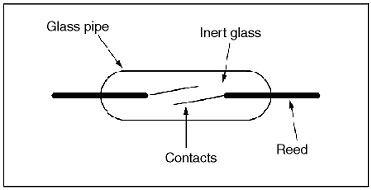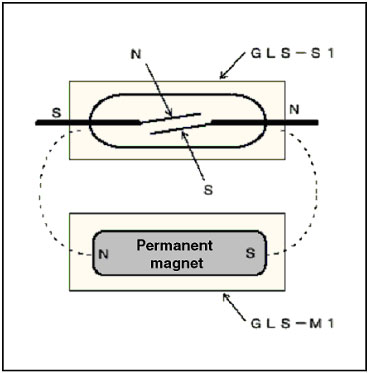What is the construction and the operating principle of the GLS Proximity Sensors?
GLS combines a reed switch and a permanent magnet.
As shown in the following figure, two reeds of electromagnetic material are inserted opposite each other with a gap in a glass pipe. This section is the contacts. (Refer to Figure 1.)
When the permanent magnet nears this section, a magnetic field causes the two reeds to be attracted to the N pole and S pole. The contacts operate due to attraction, and the contacts switch. (Refer to Figure 2.)
Figure 1: Basic Construction of a Reed Switch
Figure 2: GLS Operating Principle